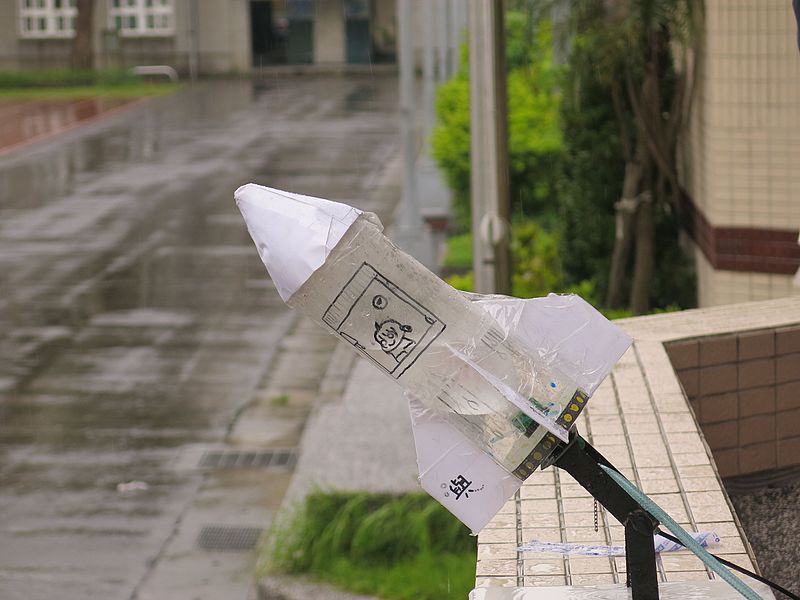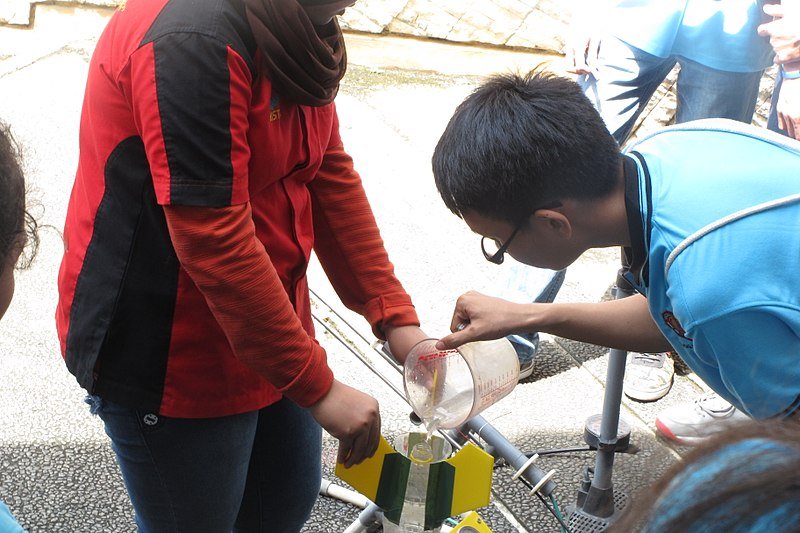One of the safe and inexpensive ways for students and children to learn about the basics of forces is by making a flying model rocket or a water rocket. It is also a way to teach students about the principles of aeronautics. Aside from that, water rockets have also been a source of entertainment for many years. But what are water rockets and how do they really work? When someone mentions water rockets, what do you envision? Do you imagine a firecracker attached to a stick into a glass bottle and then launching it?
If you’ve been hearing and reading about water rockets, but you still do not know how it works, then you’re in the right place. Today, we are going to understand how NASA explains the science of water rockets.
The Water Rocket System
The Water Rocket Launcher
Water rocket launchers come in different shapes and sizes. But in general, it has a base to support the rocket during launch. Based on NASA’s explanation, a hollow launch tube is mounted vertically to the base. It is placed into the rocket’s base before launch. The launch tube is attached to an air pump through a hollow feeder line. The pump is used to put pressure in the body tube to provide thrust for the rocket. A pressure gauge can also be fixed to the feeder line to see the change in pressure in the system, which is similar to a simple compressed air rocket.
The Water Rocket
The rocket itself is the other part of the water rocket system. It is usually made from a 2-liter bottle of soda pop. Before launching, the bottle is filled with some water. This acts as the propellant for the launch. According to NASA, the expelled water produces more thrust compared to compressed air alone because water is about a hundred times heavier than air.
The base of the water rocket is slightly larger than the launch tube. When it is placed on the launch tube, the body tube will turn into a closed pressure vessel. The pressure inside the body tube will equal the force produced by the air pump. Then, fins are attached to the bottom of the body tube. These fins provide stability during the flight.
How Water Rockets Work
The flight of a water rocket can be compared to the flight of a compressed air rocket but with an exception. The mass of the bottle rocket differs during the flight because of the draining water trail. Due to this, there are equations developed for full-scale rockets that account for the loss of mass.
Before launch, the body of the rocket or the bottle is filled with water, about 40% of its volume. After it is filled, it is mounted on a launch tube. Then, the air is pumped into the bottle rocket to put pressure on the bottle and generate thrust when the water is expelled from the rocket through the nozzle at the bottom.
During the powered ascent, the weight of the bottle rocket is continuously changing like a full-scale rocket because the water is leaving the rocket. As the water in the rocket decreases, the volume occupied by the pressurized air will increase. The increase in the amount of air reduces the pressure of the air, which also decreases the mass flow level of water through the nozzle. Aside from that, it also decreases the amount of thrust being produced.
During the powered portion of the flight, weight and thrust are constantly changing. When all of the water has been used or expelled, there will be a variance in pressure between the air in the bottle and the outside, free stream pressure. This difference will produce an additional small amount of thrust as the pressure in the bottle decreases to ambient pressure. Once the pressure equalizes, the rocket will no longer produce any thrust, and it will begin a coasting ascent.
The remainder of the flight, according to NASA, is a bit similar to the flight of a bullet fired from a gun. The only difference is that aerodynamic drag alters the flight trajectory. The water rocket slows down under the action of the weight and drag. It eventually reaches some maximum altitude. Then, the rocket will begin to fall back under the power of gravity. Some water rockets may also include a recovery system like a parachute. When you recover the water rocket, you can relaunch it.
Water Rockets and Newton’s Three Laws of Motion
According to NASA, water rockets are also excellent devices for studying the Three Laws of Motion by Newton. Let us find out how water rockets relate to these laws.
First Law
Based on Newton’s first law of motion, or the law of inertia, an object that is at rest will stay at rest, and an object that is in motion will remain in motion with the same speed and as well as direction unless an unbalanced force acts upon them. To relate this law to water rockets, a water rocket will remain on the launch pad until an unbalanced force is applied, which will propel the rocket upward.
Second Law
The second law of motion by Newton states that the acceleration of an object depends on two variables which are the net force that acts upon the object and the mass of the object. When it comes to water rockets, the amount of force depends on how much air is pumped inside the rocket. Also, a small amount of water added to it can increase the force further, which also increases the mass ejected by the air pressure in the water rocket.
Third Law
The third law of motion by Newton states that for every action, there is an equal and opposite reaction. In water rockets, the action force of the air and water as it rushes out of the nozzle generates an equal and opposite reaction, which propels the rocket upwards with force.
Water rockets may sound so simple, but when you take a closer look and study how they work, it is surprising that the science behind them is so complex. If you want to know more, you can also check out our Guide to Water Rocket Launchers.


